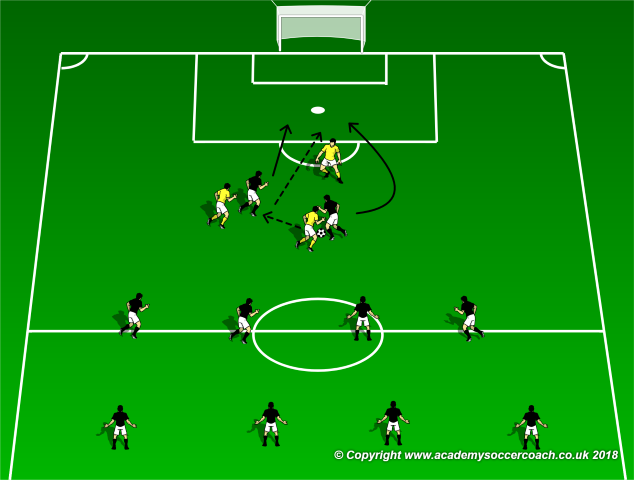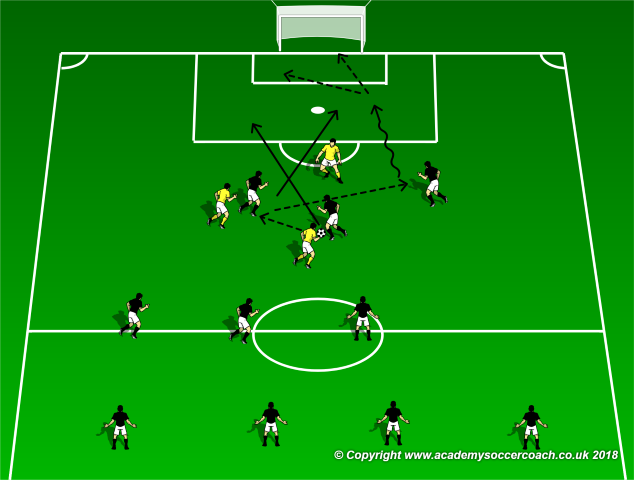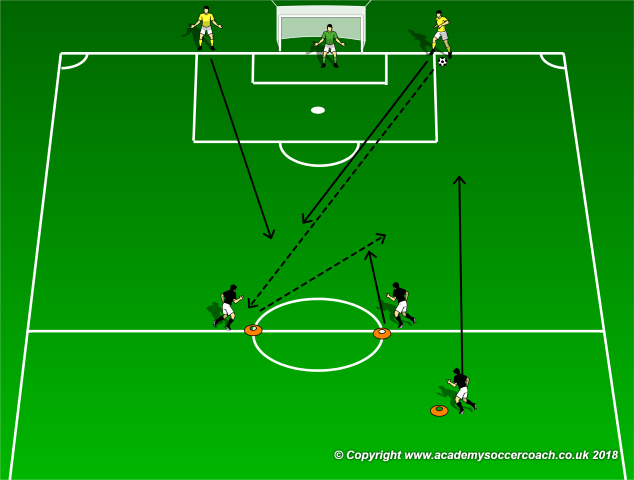By Mike Smith
Something I noticed in watching the World Cup is the number of counter attacking teams. I don’t consider myself an arm chair coach, but as one who loves a counter attacking style I did catch something which is worth mention, and practice for those of us who like to run the break: using the third man ( or woman ) and running the third man on frame. I saw a tons of 3 player back lines and several 2 player back lines as many teams pushed their outside backs way up. The 1 and 2 forward top lines often created chances but there were many where one more pass to the third man running on frame would have either given the third player a clear chance, or given the countering team numbers up behind defenders who were turning to locate the ball. What I realized in watching
The Cup is I am guilty of simply allowing my two forwards to attempt a couple give and goes at speed and while I always encourage more numbers up, it is often sending wide players up after the initial counter has stalled. Why wouldn’t I send one more player, most likely a wing mid, right into the mix? A counter is unlikely with 7 back, and if the attack stalls and the forwards can hold the ball up an extra second, my outside backs can be in position to be the wide outlet. Here is what I am talking about, and it’s worth some time at practice for any team , especially one with a dedicated countering style:


I did not include all the defenders as usually a counter is working on 2 or 3 defenders at a time. As shown above, the give and go up the middle is there and if the speed of the play is kept, it is essentially a 2 v 1 to goal. However, with the quality of today’s defenders and keepers, especially at the upper levels, a 2 v 1 isn’t a guarantee of success. Playing wide will just allow the rest of the team to recover, so why not send in 1 more – and use them?


Sending in a 3rd attacker to goal will engage the keeper and turn the closest defender towards the ball. This allows the two original attackers to maintain their pace, keep ahead of the defenders and contemplate how they will finish on an open net. If we are talking about the World Cup, I would say Belgium does this better than anyone. Trying it with your team is as simple as setting it up and letting them run it.
Set Up


As shown above, send groups of 3 attackers, with one delayed farther back, from the half line. Two defenders send the ball in and chase the play. The idea of sending two defenders should force your players to use the third option. The third attacker does not go until one of the top two attackers touches the ball.
Progression
The third attacker should be placed on the opposite side of the field as the extra defender. However, as the drill progresses, the defenders can choose to pick up which ever attacker they wish, this will give the attacking players options as to how to attack. Remember, this is a numbers up drill utilizing the third attacker, so any progression should not involve added numbers, but allowing the defenders to start high up the field, like at the top of the penalty box.
Coaching Points
Good runs on frame to engage the keeper with the third attacker are the focal points here. The goals is to get the ball to an open player facing an open net, make sure your attackers are combining to do so.
By Mike Smith
Currently the Head Coach for University Heights Academy Boys Soccer in Hopkinsville, KY , Mike is in his 14th year as a high school head coach with 23 years coaching experience overall and 34 year as a student and fan of the game. He holds a USSF D License.


